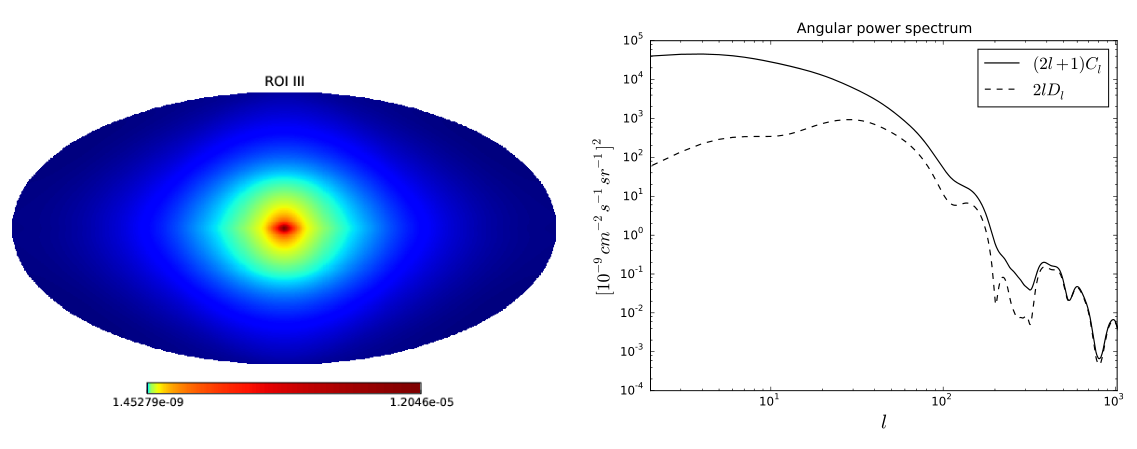Morphology of secondary γ-ray emission of self-interacting dark matter model
2016-08-01In the standard ΛCDM cosmology model, cold dark matter (DM) consists of ~26.8% of the energy density in the current Universe. Although it is abundant, the DM particles have not been reliably detected. With the Fermi-LAT data, quite a few research groups have reported a spatially extended GeV γ-ray excess surrounding the Galactic center (GC). One interesting possibility of its physical origin is the inverse Compton scattering (ICS) of the electrons and positrons from the annihilation of self-interacting dark matter (SIDM) particles with the interstellar optical photons. Due to the non-spherical distribution of the target interstellar photon emission, the ICS induced gamma-ray morphology is expected to deviate from circular symmetry.
Recently, Ming-Yang Cui from Purple Mountain Observatory and Nanjing University, and his collaborators propose methods to investigate the spatial distribution of the ICS component in detail.
They first look at the degree of asymmetry (DOA) of the residual gamma-ray skymap. As illustrated in Fig. 1, the largest DOA reaches 30% or more for DM particle mass of ~tens GeV. Then the spherical harmonics expansion has been applied to the gamma-ray count map. Significant deviation from the circular symmetric case (e.g., from direct annihilation of DM particles) at low l region can be seen, as shown in Fig. 2.

Fig. 1 : The spatial distribution of the ICS emission as a function of viewing direction (θ, ?).

Fig. 2 : The left presents the count maps of γ rays in logarithmic scale in the Galactic coordinate system. And the two kinds of angular power spectrum illustrated in the right.
The sizeable DOA is helpful in testing the ICS interpretation of the GeV excess. As found in the latest analysis by the Fermi Collaboration, if only the interstellar emission and point sources are employed to fit the data the residual GeV emission is weakly asymmetric around the GC. This may be suggestive of an excess in the data that is non-symmetric. However, the current analysis relies largely on the astrophysical background modeling. The Fermi-LAT team pays quite amount of efforts to develop a model of the Galactic diffuse emission with less systematic uncertainties. Hopefully more reliable morphology of the GeV excess can be obtained with improved diffuse background model in the future, and the origin of the excess emission can be better understood.
This work is supported in part by the National Natural Science Foundation of China. The paper has been published on Physical Review D (please refer to http://dx.doi.org/10.1103/PhysRevD.93.123516).

 Search
Search

